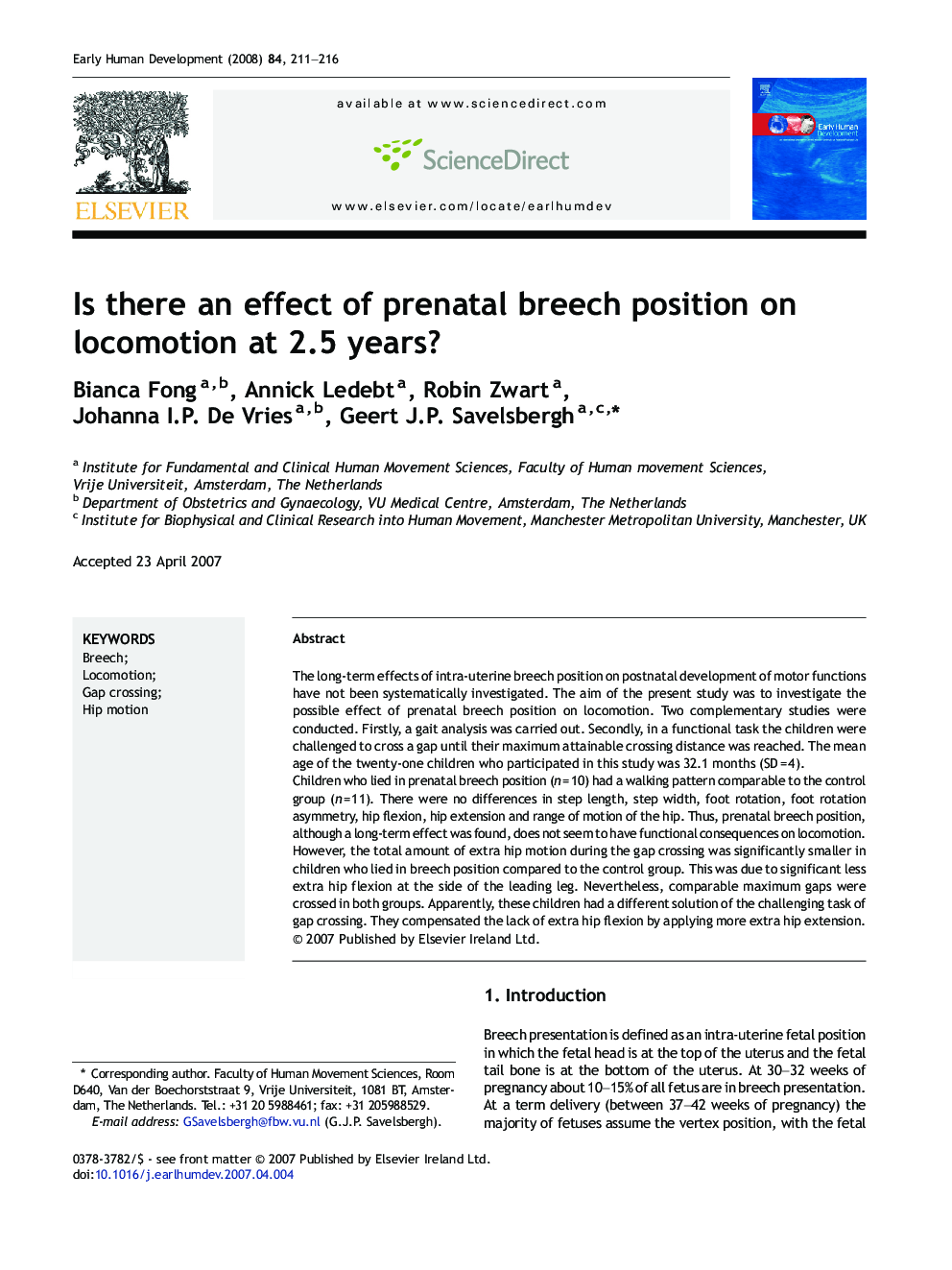| Article ID | Journal | Published Year | Pages | File Type |
|---|---|---|---|---|
| 3918260 | Early Human Development | 2008 | 6 Pages |
The long-term effects of intra-uterine breech position on postnatal development of motor functions have not been systematically investigated. The aim of the present study was to investigate the possible effect of prenatal breech position on locomotion. Two complementary studies were conducted. Firstly, a gait analysis was carried out. Secondly, in a functional task the children were challenged to cross a gap until their maximum attainable crossing distance was reached. The mean age of the twenty-one children who participated in this study was 32.1 months (SD = 4).Children who lied in prenatal breech position (n = 10) had a walking pattern comparable to the control group (n = 11). There were no differences in step length, step width, foot rotation, foot rotation asymmetry, hip flexion, hip extension and range of motion of the hip. Thus, prenatal breech position, although a long-term effect was found, does not seem to have functional consequences on locomotion.However, the total amount of extra hip motion during the gap crossing was significantly smaller in children who lied in breech position compared to the control group. This was due to significant less extra hip flexion at the side of the leading leg. Nevertheless, comparable maximum gaps were crossed in both groups. Apparently, these children had a different solution of the challenging task of gap crossing. They compensated the lack of extra hip flexion by applying more extra hip extension.
